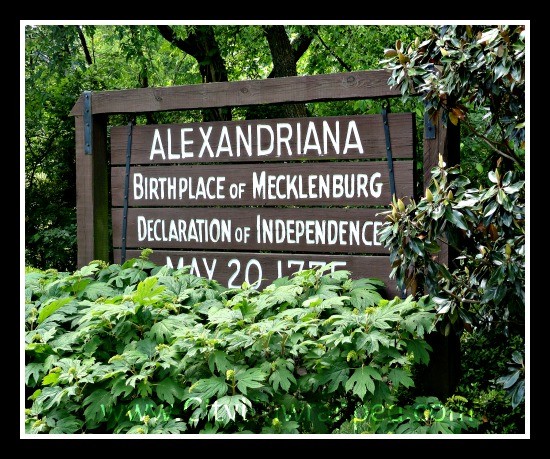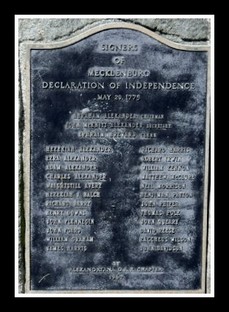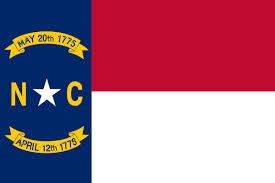Alexandriana Historical Site
Introduction
Text-to-speech Audio
Images
Mecklenburg Declaration of Independence Site Entrance

Mecklenburg Declaration of Independence Site Plaques

Mecklenburg Declaration of Independence Site

North Carolina State Flag

Backstory and Context
Text-to-speech Audio
On May 20th, 1775, what is claimed to be the first declaration of independence from Great Britain was supposedly signed at this site in Mecklenburg county, near Charlotte, North Carolina. If factual, the Mecklenburg Declaration would be the first declaration signed in the 13 colonies, and would predate the Federal U.S. Constitution by one year.
Thomas Polk and several other notable citizens are considered responsible for initial creation the document, publicly reading it to the citizens of Mecklenburg County on May 20th, 1775. Military Captain James Jack is said to have rode to Philadelphia to deliver the documents the following day. A short time later, a second document was created, called the Mecklenburg Resolves, outlining the specific demands of the Declaration.
The Mecklenburg Declaration of Independence is a contested document. While some believe it is an authentic entity, no tangible form of the Declaration exists. The only evidence of it’s existence is a 1819 newspaper article, which republished the text. No documentation, newspaper article, or otherwise official mention of the Mecklenburg Declaration is found prior to 1819. While there were 28 original signers of the text, none of the official signers had ever claimed to do so.
Additionally, the phrasing of the document, as cited in newspapers in 1819, is very similar to the United State’s Declaration of Independence, which allegedly did not exist for another year. Since the publishing in 1819, scholars have debated its authenticity.
One theory proposed by professional historians is that the Mecklenburg Declaration of Independence is an incorrect adaption of a recognized authentic document, called the Mecklenburg Resolves, a text passed on May 31, 1775. While it was a radical set of resolutions, the Mecklenburg Resolves was not actually an authentic Declaration of Independence. The Mecklenburg Resolves were published in the newspaper in 1775, however were subsequently lost following the revolution. In an attempt to recreate the document from memory, the author of the 1819 publishing incorrectly assumed the Resolves were a Declaration, and in borrowing language from the Declaration of Independence, recreated an inaccurate representation of the original text.
This theory, and the idea of the Mecklenburg Declaration’s falsity, were denied by the North Carolina government. Convinced the document was a genuine article that stood as America’s first declaration of independence from Great Britain, the North Carolinians inscribed both the flag and the seal of the state with the date of the declaration. A statewide holiday called “Meck Dec Day” is commemorated on the 20th of May, however it is no longer considered an official holiday.
At the site in Alexandriana, visitors can view the monument and commemorative plaques honoring the alleged signees of the document.
